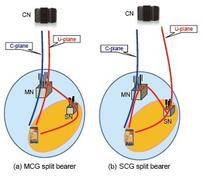
4G Architecture: LTE Network Elements and Interfaces
Explore the 4G LTE network architecture, including eNodeB, MME, SGW, PGW, and key interfaces, for efficient mobile communication and high-speed data transfer.
Showing 25 posts (Page 1 of 9)
Advertisement

Explore the 4G LTE network architecture, including eNodeB, MME, SGW, PGW, and key interfaces, for efficient mobile communication and high-speed data transfer.

Explore 4G LTE coverage, focusing on AT&T and T-Mobile in the USA. Learn about LTE network topologies, TDD, and FDD.
Explore 4G LTE drive test tools and essential testing parameters for network optimization. Learn how to measure signal strength, throughput, and more.

Learn how 4G LTE filters prevent interference with digital TV reception by blocking LTE signals that overlap with UHF frequencies.

Explore the 4G LTE frame structure, including Time Division Duplex (TDD) and Frequency Division Duplex (FDD) frame types and their configurations.
Learn 4G LTE identifiers including IMSI,NAI,IMEI,GUTI,APN,ECGI,ECI and MSISDN with their respective purposes and structures.

Explore 4G LTE network security essentials: key hierarchy, authentication, and encryption protocols crucial for data protection and network integrity.
Learn about 4G LTE PRB utilization, including its definition, formula, calculation, affecting factors, and ideal range.

Learn to calculate 4G LTE throughput using formulas and a handy calculator. Optimize network performance by understanding LTE speed calculation based on modulation, TBS, and MIMO configuration.

Explore the key differences between 4G speed and 4G range, delving into the factors influencing 4G LTE network performance and coverage.
Explore the differences between 4G and LTE, including data rates, standards, and the technologies that underpin them.

4G represents the fourth generation of wireless tech, delivering high-speed data for mobile devices. It encompasses technologies like LTE and WiMAX, enabling applications like video conferencing.

Explore 5G EN-DC (E-UTRA NR Dual Connectivity), enabling devices to connect to both LTE and NR networks simultaneously, leveraging the benefits of each.

Understand 5G NR split bearer functionality in dual connectivity (DC) mode. Learn key concepts like master node, secondary node, and data splitting for enhanced throughput.

Diagnose why a 5G gNB cell doesn't receive the SgNB Reconfiguration Complete message in dual connectivity mode. Learn common causes and debugging steps.
Explore the key differences between 5G and LTE Advanced Pro in terms of data rates, frequency, bandwidth, compatibility, and more.
Anritsu updates its LTE network simulator to support TD-LTE carrier aggregation, enabling downlink throughput up to 300Mbps. Support for both FDD and TD-LTE is available.
Anritsu introduces new frequency options for its PIM Master, enabling LTE 800 MHz, UMTS 2100 MHz, and LTE 2600 MHz band testing, ideal for LTE network deployment and maintenance.

Explore the distinction between antenna ports and physical antennas in 5G NR and LTE, focusing on how antenna ports enhance data reliability and rates.

Explore the Apple Watch Series 3 features, focusing on its cellular capabilities and benefits of LTE network connectivity.
AT&T announces its LTE network now covers approximately 240 million customers across 400 markets, highlighting its investment in fast, reliable wireless service.

Explore C-V2X (Cellular Vehicle-to-Everything) technology, its LTE and 5G modules, features, capabilities, and use cases for enhancing road safety and traffic efficiency.
CBRS is a wireless communication system using the 3550-3700 MHz band (LTE band 48 in the US). It enables shared spectrum access for 4G LTE and 5G NR, benefiting enterprises and industries.

Understand the roles of CDF, CDR, and CTF in LTE charging. CDF creates CDRs from charging events triggered by the CTF, which monitor service usage.

Explore cellular frequencies used in GSM, CDMA, UMTS, and LTE networks, with a focus on frequency bands in the USA and Europe.
Advertisement